Tsukemono are traditional Japanese pickles made by preserving and fermenting vegetables in salt, rice bran, vinegar, miso, or soy sauce. They are an essential part of Japanese cuisine, often enjoyed as a side dish, palate cleanser, or rice accompaniment. Tsukemono also serve as a method for preserving seasonal vegetables for long-term storage.
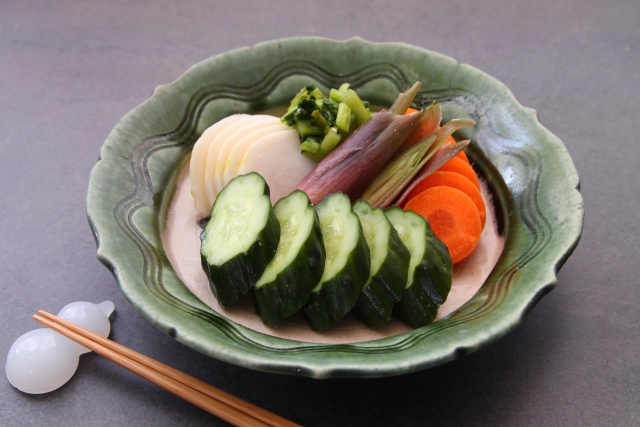
Taste, Flavor, Texture
Taste:Tsukemono varies from salty and tangy to mildly sweet or deeply umami, depending on the pickling method. Shiozuke is light and salty, suzuke has a refreshing acidity, and nukazuke develops a complex, fermented depth.
Flavor:Each type carries distinct aromas, from the fresh, crisp scent of lightly pickled vegetables to the rich, earthy notes of long-fermented varieties. Some, like misozuke, absorb the deep umami of miso, enhancing their overall complexity.
Texture:The texture ranges from crunchy (as in cucumber or daikon pickles) to tender and slightly chewy in aged varieties. Some pickles, like nukazuke, have a slight stickiness due to fermentation.
Uses of Tsukemono
Tsukemono are more than just preserved vegetables; they enhance the flavors of Japanese meals in various ways.
- Rice accompaniment: Their refreshing taste complements the flavors of Japanese rice.
- Tea pairing: Pickles like shibazuke and takuan are sometimes enjoyed with tea.
- Snack with alcohol: Their umami and saltiness pair well with sake and shochu.
- Side dish: Often served alongside set meals as a palate cleanser.
Common Types of Japanese Pickles

A traditional pickle made by fermenting rice bran (nuka) and using it to pickle vegetables like eggplant, cucumber, and daikon. The fermentation process imparts a unique umami and tangy flavor, rich in lactic acid bacteria.
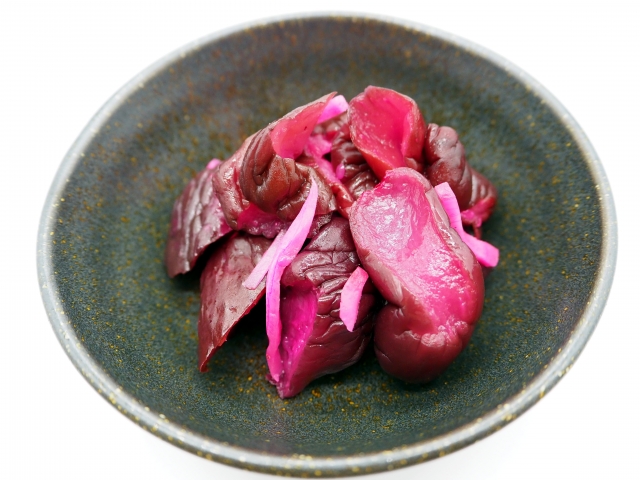
A pickle originating from Kyoto, made by pickling eggplant and cucumber in red shiso leaves. It has a vibrant purple-red color and a strong sourness.
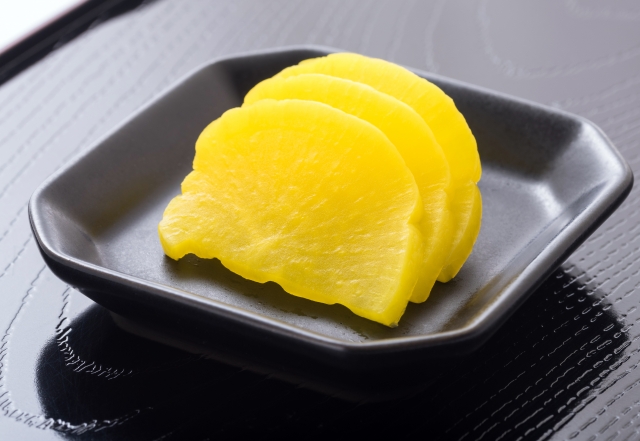
A yellow pickle made by salting and drying daikon radish. It offers a balance of sweetness and saltiness, with a crunchy texture.
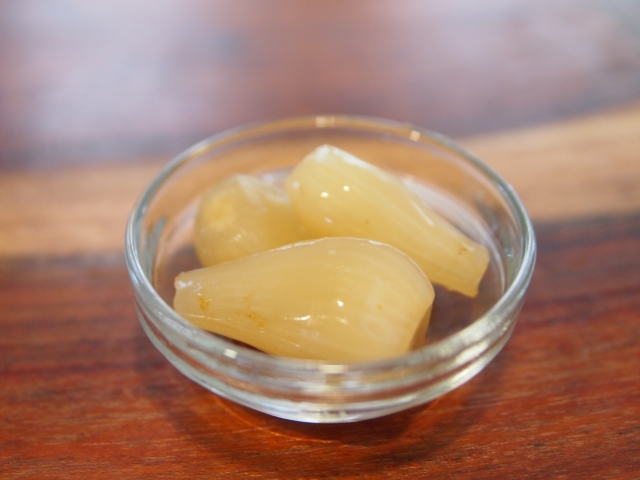
Pickled small bulb-like vegetables (similar to small onions) in vinegar, sugar, and salt. It has a crisp texture and a refreshing, tangy flavor.
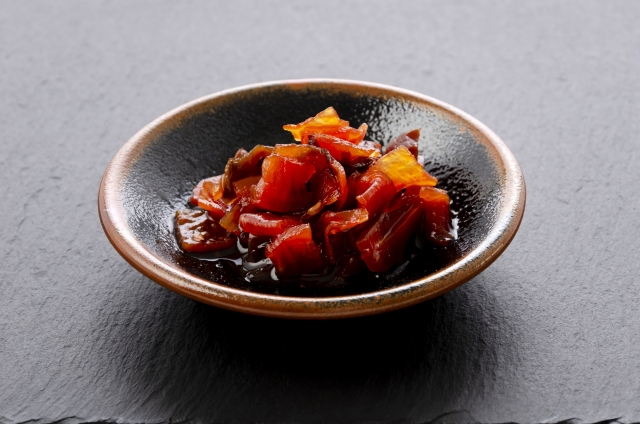
A popular accompaniment to curry, this pickle is made from vegetables like eggplant, cucumber, and myoga, pickled in a sweet vinegar solution. It features a rich color and a tangy flavor.
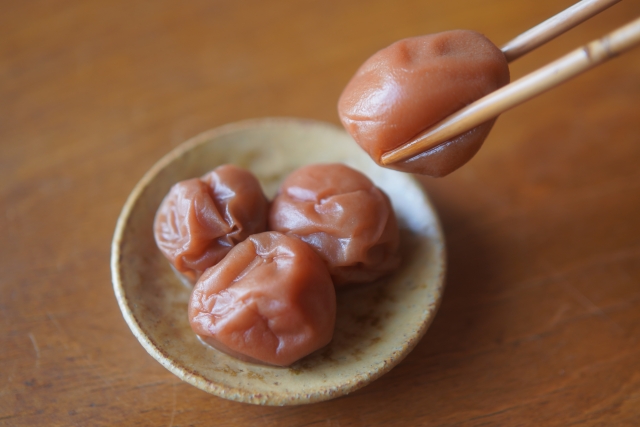
A traditional pickle made from ume (plum) fruit, salted and then dried. It has a strong sour and salty flavor, often believed to aid digestion.
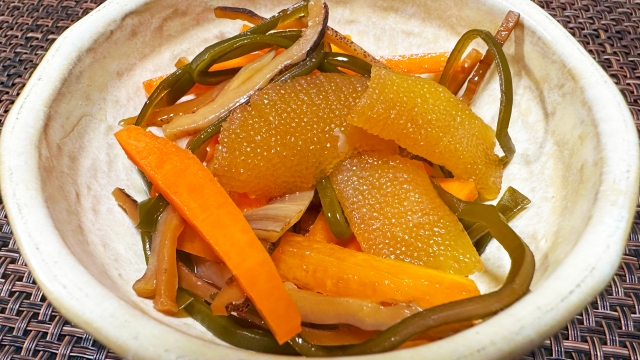
A pickle originating from Hokkaido, made by using kombu and various dried ingredients. It has a sweet and savory flavor, with the umami of kombu infusing the vegetables.
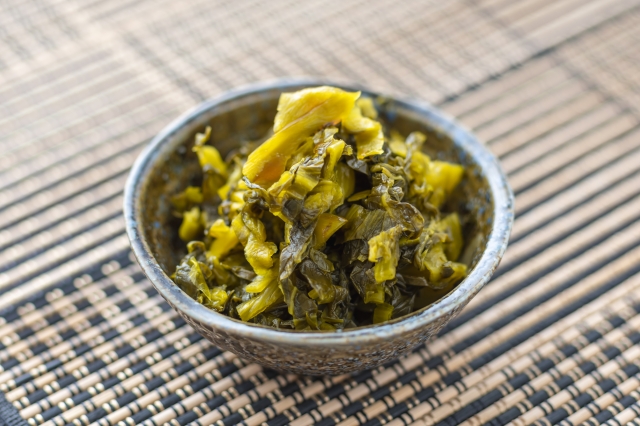
Pickled takana (mustard greens) made by salting the leaves. It has a refreshing saltiness with a slight bitterness, making it a popular side dish with rice.
How Tsukemono Are Made
The method of making tsukemono varies depending on the pickling medium and fermentation process.
1. Salted Pickles (Shiozuke)
Salted pickles are one of the most basic types of pickles, made by rubbing vegetables with salt, which draws out moisture and promotes fermentation.
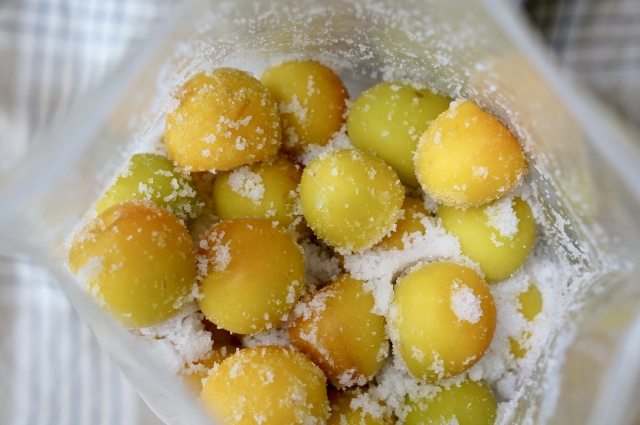
Process:
- Vegetables are washed and selected.
- Salt is applied, and the vegetables are weighted down to allow them to ferment.
- As fermentation progresses, the vegetables soften, developing a tangy and savory flavor.
Examples: Takuan (pickled daikon), cucumber pickles, umeboshi (pickled plums)
2. Nukazuke (Pickled in Rice Bran)
Nukazuke is a type of pickle made using rice bran, which encourages the growth of lactic acid bacteria that ferment the vegetables, imparting a unique flavor.
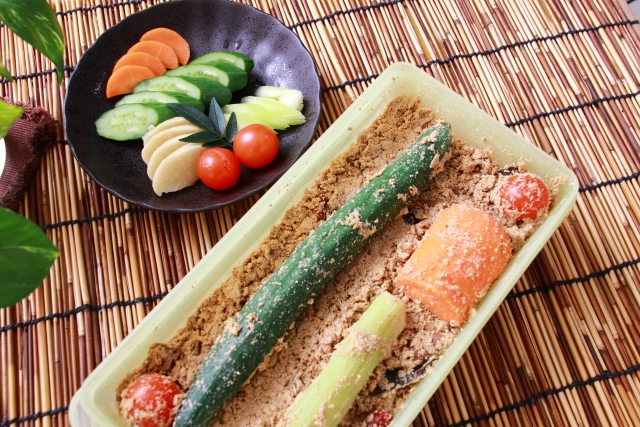
Process:
- Rice bran is mixed with salt and spices, along with ingredients like kombu or chili peppers, to promote fermentation.
- Vegetables are buried in the rice bran mixture and regularly stirred to maintain the fermentation process.
- The longer the vegetables ferment, the more intense the flavor becomes.
Examples: Cucumber nukazuke, daikon nukazuke, eggplant nukazuke
3. Miso Pickles (Misozuke)
Miso pickles are made by using miso to ferment vegetables, which imparts a deep, rich flavor thanks to miso’s fermentation components.
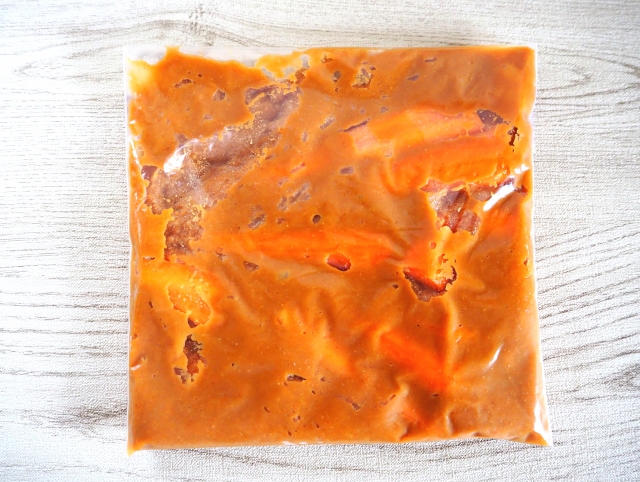
Process:
- Vegetables are washed and lightly salted.
- The vegetables are then coated with miso and stored in an airtight container.
- Over time, the miso fermentation flavors infuse into the vegetables, creating a savory and umami-rich taste.
Examples: Pickled ginger, kabocha squash miso pickles
4. Lightly Pickled Vegetables (Asazuke)
Asazuke is a quick-pickling method that preserves the natural freshness and crisp texture of vegetables while adding mild seasoning.
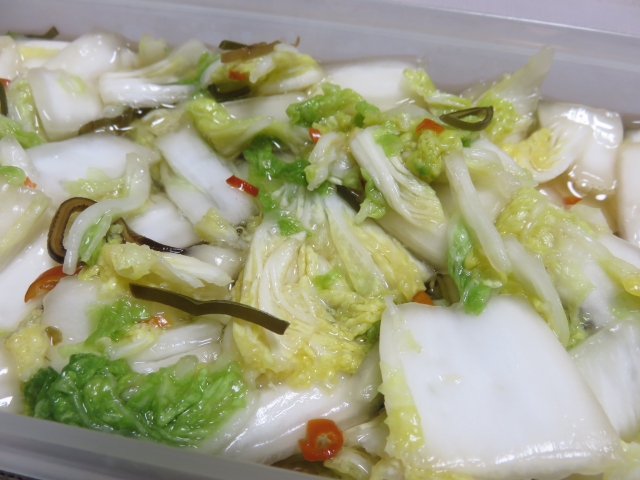
Process:
- Vegetables are briefly soaked in a light brine, salt, or a simple seasoning mix, sometimes including kombu, vinegar, or chili.
- Since fermentation is minimal, asazuke retains the original flavor and crunch of the ingredients.
Examples: Cucumber asazuke, lightly pickled cabbage, daikon asazuke
5. Vinegar Pickles (Su-zuke)
Vinegar pickles are made by using vinegar as the main ingredient, providing a refreshing sour flavor. They are often quick to make compared to other types of pickles.
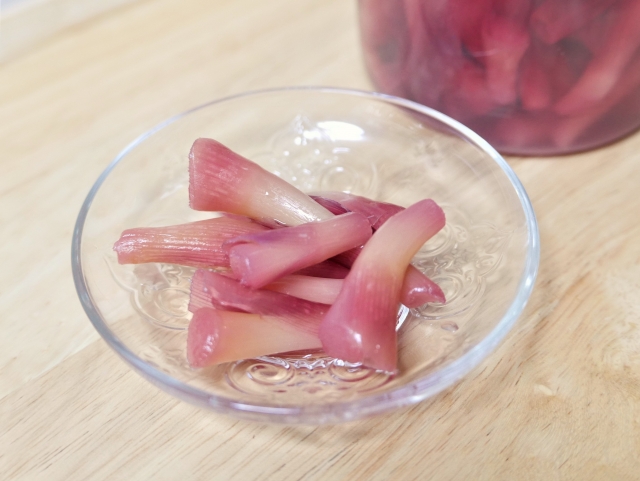
Process:
- Vegetables are washed and soaked in a mixture of vinegar, salt, and sugar to balance the flavors.
- The vegetables are allowed to marinate in the solution for a short period, allowing them to absorb the tangy, sweet flavor.
Examples: Fukujinzuke (pickled vegetables served with curry), sweet and sour pickled vegetables
Nutritional Value
Japanese pickles are not only flavorful but also offer various health benefits. Fermented pickles like nukazuke and shibazuke are rich in probiotics, which promote gut health and digestion. Many pickles, such as umeboshi (pickled plums), contain high levels of antioxidants and organic acids that aid digestion and help prevent fatigue. Additionally, pickles made from leafy greens, like takanazuke, provide essential vitamins such as vitamin C and vitamin K. Since some varieties, especially shiozuke (salt pickles), can be high in sodium, they are best enjoyed in moderation.
Historical Background
Japanese pickles have a long history dating back to ancient times. They were originally developed as a preservation method before refrigeration existed. Nukazuke, for example, has been a staple since the Edo period (1603–1868), while shibazuke is believed to have originated in Kyoto over 1,000 years ago. Matsumaezuke, a pickled seafood and vegetable dish, emerged in Hokkaido during the Edo period, reflecting regional adaptations of pickling methods. Over centuries, pickles have remained an essential part of Japanese cuisine, accompanying meals as side dishes, condiments, or even snacks.
Comments